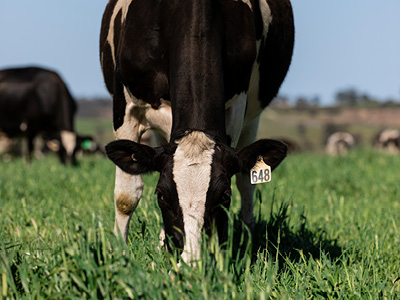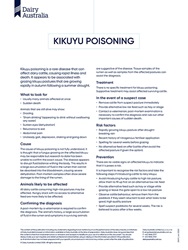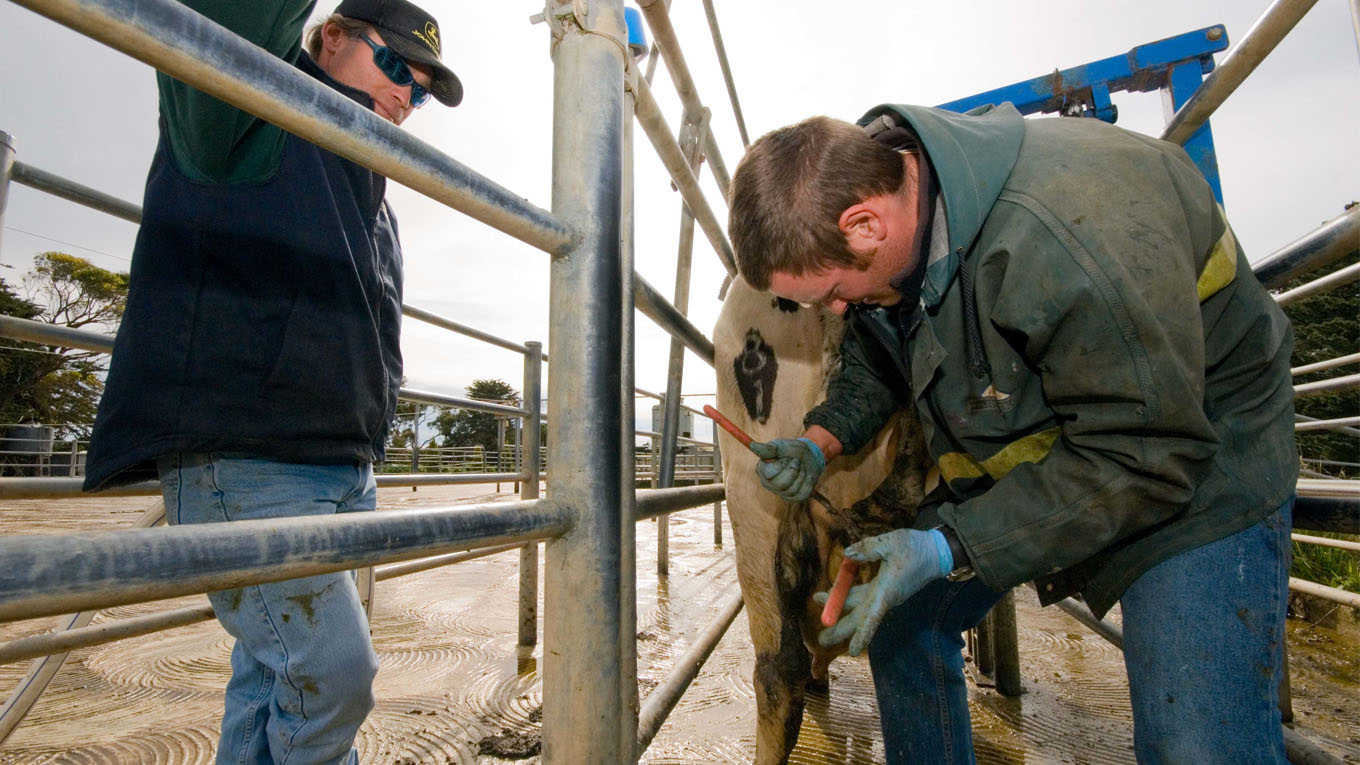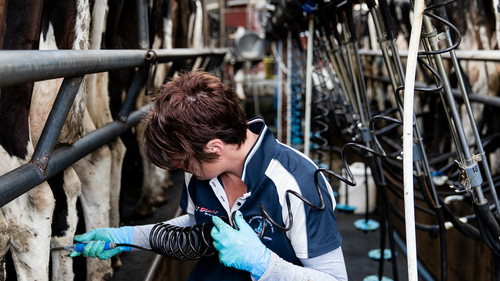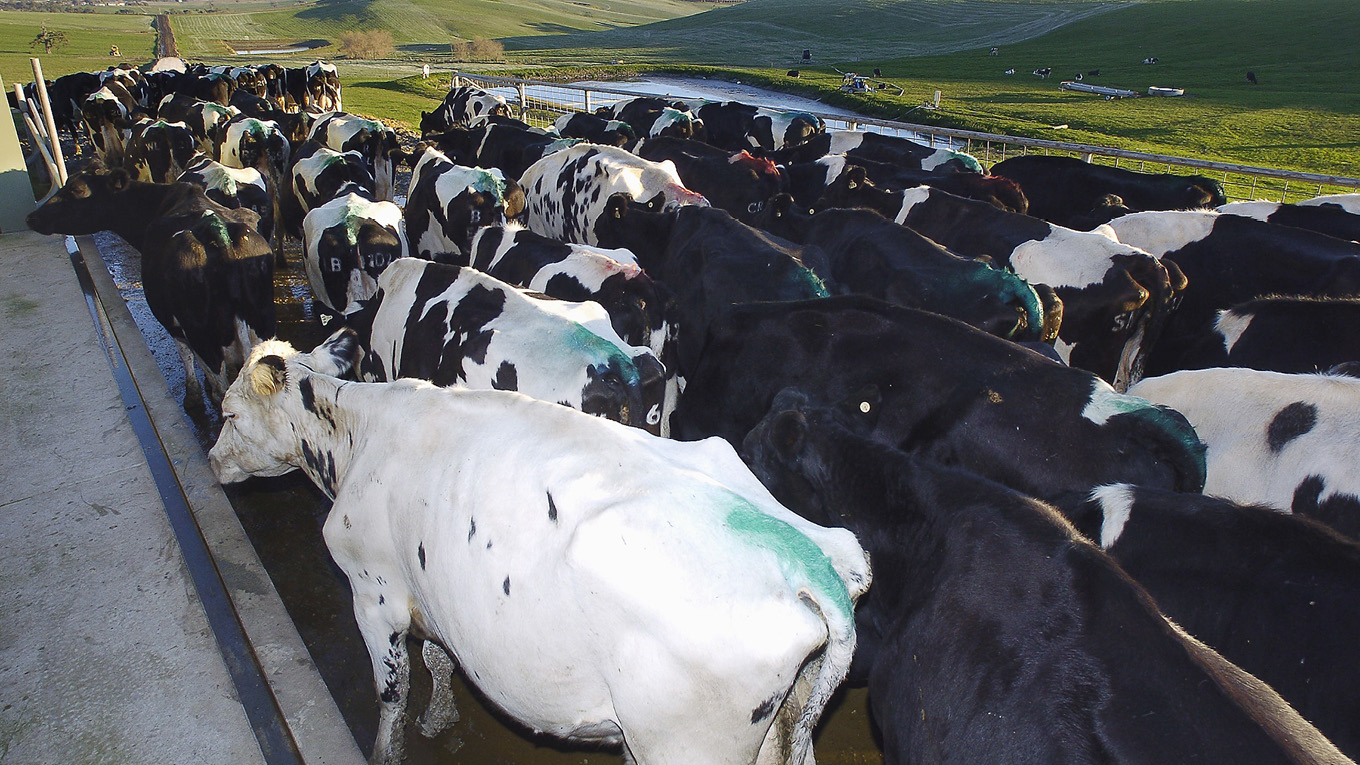Kikuyu
Kikuyu is a C4 tropical grass which originated in the kikuyu region of Kenya. In Australia, it is an important component of dairy pastures in many areas of New South Wales, Queensland, parts of Gippsland and in Western Australia under irrigation.
Some farmers have traditionally viewed kikuyu as a nuisance species in their pasture, but it is very persistent and has a deep root system. It is also approximately twice as water efficient as ryegrass and, as a summer active, it can provide moderate to good quality forage for dairy cows in summer and autumn.
Nutritional value
As a C4 grass, kikuyu is naturally higher in neutral detergent fibre (NDF) and lower in metabolisable energy (ME) than other species such as ryegrass. However, under good management, ME levels of 9–10 megajoules per kilogram of dry matter can be achieved. In many cases this would be similar to average quality ryegrass pasture silage.
As kikuyu is lower in ME than ryegrass pastures, there can be a good milk yield response to concentrate supplementation of kikuyu-based pastures. This response can vary between 1.2–1.5 litres of milk for each kilogram of concentrate added, up to about 5kg of concentrates.
Kikuyu is deficient in sodium and calcium and so these minerals need to be included as supplements for dairy cows grazing kikuyu pastures.
Grazing kikuyu
Kikuyu requires high soil fertility to grow to its full potential but the most important aspect of managing kikuyu is precise grazing management.
The stem component of kikuyu is very high in NDF and low in ME, with very low milk production potential. Therefore, the aim is to maximise the intake of the more nutrient-dense leaf component, while also not allowing the stem component to dominate the sward.
The conventional recommendation has been to graze kikuyu at the 3–4 leaf stage, down to a residual height of five centimetres. This prevents the build-up of stem material at the base of the sward that is lower in quality.
As a rule of thumb, a grazing rotation of approx 14 to 17 days from November onwards is necessary. Dairy Australia recently funded research at Gatton in Queensland which has shown the PUP (proportion of ungrazed pasture) grazing management principles may be an even better way of maximising the intake to leafy pasture when grazing kikuyu. More information on PUP grazing can be found on the PUP grazing page.
Risks
Kikuyu poisoning can occur under certain conditions, such as rapidly growing autumn pastures following a summer drought. This should be carefully monitored for.
More information on Kikuyu poisoning can be found in the kikuyu poisoning factsheet.
